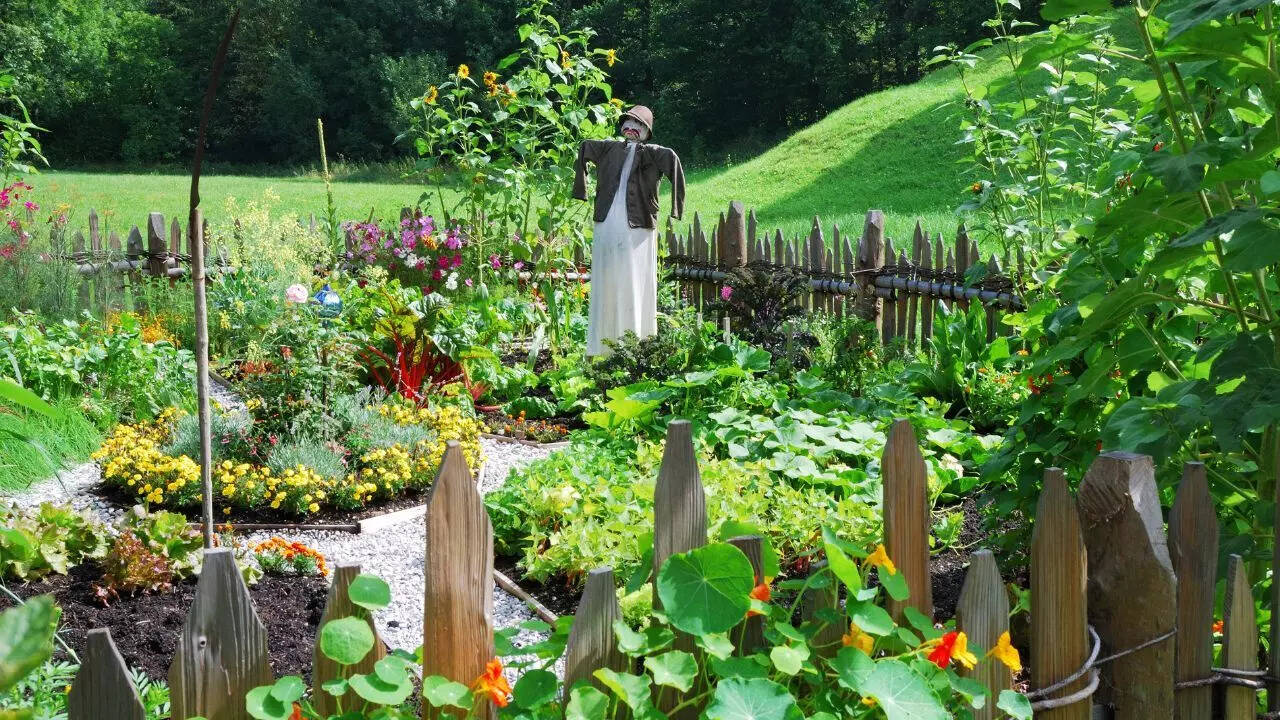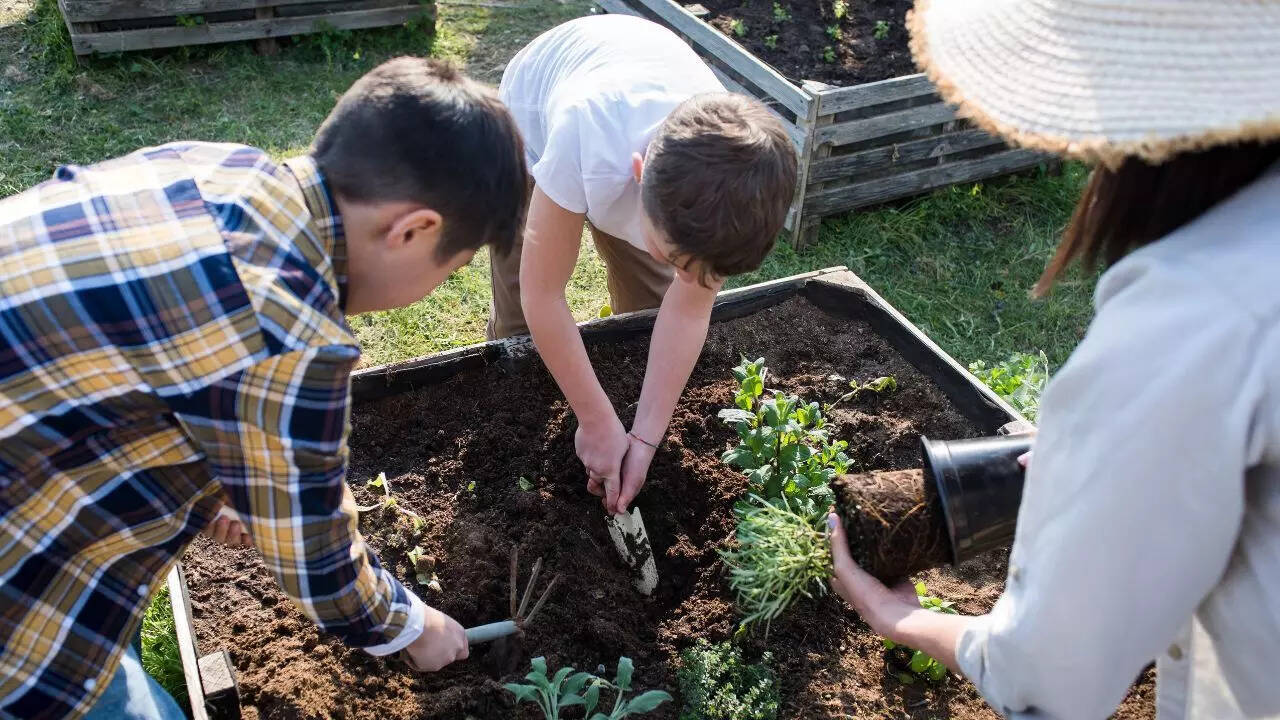The monsoon season offers an ideal environment for kitchen gardening, with gentle showers and optimal temperatures promoting seed germination and nutrient absorption. Gardeners can cultivate leafy greens, root vegetables, legumes, fruiting vegetables, and herbs. Natural irrigation, pest balance, and enhanced soil fertility contribute to fresher, healthier produce, making it a rewarding time to reconnect with nature.
The monsoon season revitalizes the earth, quenching its thirst and providing relief from the summer's intensity. This natural phenomenon serves as an invitation for gardeners to cultivate, plant, and nurture their own green spaces. The combination of ample rainfall, softened earth, and moderate temperatures creates an ideal environment for establishing a thriving kitchen garden.
Whether you're an experienced gardener or a novice, the rainy season provides a fantastic opportunity to grow your own food and immerse yourself in the joys of gardening. As the rains saturate the soil, your garden will burst forth with vibrant greenery, crisp vegetables, and an array of colorful flowers. The monsoon season offers a chance to reconnect with nature, get your hands dirty, and experience the satisfaction of cultivating your own produce. Each seed sown and each harvest reaped brings immense joy in the nurturing of life and witnessing the flourishing of your garden.

A Step-by-Step Guide to Starting Your Monsoon Kitchen Garden
- Strategic Location: Choose a spot that receives 4-6 hours of indirect sunlight daily and is free from waterlogging. Ensure proper air circulation around the plants to minimize the risk of fungal diseases.
- Soil Preparation: Gently loosen the soil, incorporate compost, and verify adequate drainage. Enrich the soil with essential nutrients by mixing in organic matter like well-rotted manure.
- Planting Choices: Adhere to spacing recommendations to encourage healthy growth. Consider companion planting strategies to optimize space and facilitate mutually beneficial growth.
- Watering Wisely: Primarily rely on rainwater, but monitor moisture levels to avoid waterlogging. Evaluate soil moisture by inserting your finger into the soil to the first knuckle before watering.
- Mulching for Moisture Retention: Utilize dried leaves or straw as mulch to moderate soil temperature and retain moisture. Apply a 2-3 inch layer of mulch around plants, ensuring it remains a few inches from the stems.
- Natural Pest Control: Employ natural pest deterrents, such as neem oil or garlic-chili spray, to safeguard your plants. Attract beneficial insects like ladybugs and lacewings, which feed on common garden pests.
- Regular Harvesting: Frequent harvesting of leafy greens and young vegetables encourages continuous yields. Harvest in the morning when plants have the highest water content for optimal taste and texture.

Preparing the Soil for Monsoon Planting
The monsoon rains naturally soften compacted soil, making it easier to till and aerate. Incorporate organic compost, farmyard manure, or leaf mold to boost fertility, as these materials decompose quickly in the moist conditions, releasing essential nutrients like nitrogen, phosphorus, and potassium.
Incorporate natural additives like neem cake or bone meal to further enhance nutrition and pest resistance. Conduct a drainage test before planting by filling a small hole with water; it should drain within 2-4 hours. For clay-heavy soils, add cocopeat or coarse sand to improve aeration and prevent waterlogging, which promotes healthy root development and a flourishing kitchen garden.
Key Advantages of Monsoon Cultivation
- Natural Irrigation: Consistent rainfall reduces the need for manual watering, saving time and resources. Rainwater also provides a natural and optimal source of hydration for plant growth.
- Ideal Growing Conditions: Natural rainfall contributes to cooler temperatures and increased soil moisture, promoting seed germination and root establishment. The monsoon season offers optimal conditions for plant growth and flourishing, with temperatures around 25-30°C (77-86°F) and ample humidity.
- Natural Pest Management: The humid environment fosters beneficial organisms that suppress harmful pests, reducing the reliance on pesticides and promoting ecosystem health by preventing chemical contamination of food.
- Enhanced Soil Fertility: Organic matter decomposes rapidly, enriching the soil and providing vital nutrients to plants. The warm and moist conditions encourage microbial activity, making nutrients more accessible for plant uptake.
- Fresher, Healthier Produce: Homegrown vegetables are fresher, chemical-free, and nutrient-rich. There is immense satisfaction in cultivating vegetables with perfect nutritional value without relying on industrial agriculture.
Best Vegetables and Herbs for Your Monsoon Kitchen Garden
- Leafy Greens: Spinach, fenugreek, amaranth, and coriander thrive in moist conditions.
- Root Vegetables: Radishes and short varieties of carrots grow well in softened soil.
- Legumes: French beans, cluster beans, and peas add nitrogen to the soil, enhancing its fertility.
- Fruiting Vegetables: Tomatoes and chilies thrive with good drainage and ample sunlight.
- Herbs: Mint, basil, and dill are flavorful additions that can also help manage pests.


 Vijay Officially Named TVK's Chief Minister Hopeful for Tamil Nadu's 2026 Election
Vijay Officially Named TVK's Chief Minister Hopeful for Tamil Nadu's 2026 Election
 RJ Mahvash Prioritizes Work Over Buzz, Addresses Link-Up Speculation
RJ Mahvash Prioritizes Work Over Buzz, Addresses Link-Up Speculation
 UNESCO's World Heritage Wonders: Unveiling 10 Iconic Sites, From Petra to the Pyramids
UNESCO's World Heritage Wonders: Unveiling 10 Iconic Sites, From Petra to the Pyramids
 JPG to PDF: A Comprehensive Guide for Graphic Designers & Professionals
JPG to PDF: A Comprehensive Guide for Graphic Designers & Professionals
 iQoo Z9 Turbo: Rumored Specs Emerge – Snapdragon 8s Gen 3, 6000mAh Battery Highlighted
iQoo Z9 Turbo: Rumored Specs Emerge – Snapdragon 8s Gen 3, 6000mAh Battery Highlighted
 Shadman Islam Defends Bangladesh Batters After Day 1 Struggles Against Sri Lanka
Shadman Islam Defends Bangladesh Batters After Day 1 Struggles Against Sri Lanka
 England's Bold Claim: Could They Have Chased Down 450 Against India?
England's Bold Claim: Could They Have Chased Down 450 Against India?
 5 Often-Missed Warning Signs of Bladder Cancer You Need to Know
5 Often-Missed Warning Signs of Bladder Cancer You Need to Know
 KL Rahul Puts Country First, Prioritizes England Tests Over Newborn Child
KL Rahul Puts Country First, Prioritizes England Tests Over Newborn Child
 Tick Bite Paralyzes Fitness Influencer: A Wake-Up Call for Outdoor Enthusiasts
Tick Bite Paralyzes Fitness Influencer: A Wake-Up Call for Outdoor Enthusiasts